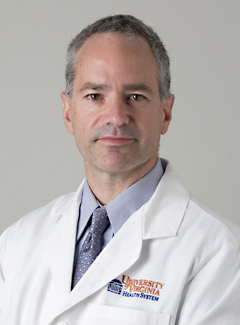In a finding important for preventing the development of antibiotic-resistant superbugs, researchers at the University of Virginia School of Medicine and 22 other institutions have determined that the duration of antibiotic treatment for complicated abdominal infections can be cut by half and remain equally effective.
The researchers, led by the U.Va. team, looked at the treatment of infections after the source of the infection was addressed, such as the removal of an inflamed appendix. They found that administering antibiotics for only four days was as effective as treatments spanning eight days.
“There hasn’t been a lot of guidance on how long to treat intra-abdominal infections with antibiotics once you’ve gotten control over the source of infection,” said Dr. Christopher Guidry of the U.Va. Department of Surgery. “In the large scale, antibiotics have some downsides. The increasing prevalence of antibiotic resistance is a problem, so anything we can do to minimize exposure is important.”
The researchers set out to provide answers to an important and unresolved question: How long a course of antibiotics is really necessary? There are 300,000 cases of appendicitis in the United States each year, and at least twice that many other cases of abdominal infection, so it is critically important that doctors have reliable information for providing treatment that is both effective and conservative in its antibiotic use.
Doctors traditionally have given antibiotics until all symptoms disappear, typically a week or two. More recent guidelines have called for much shorter courses of four to seven days, but many doctors have resisted the change and continued to administer antibiotics for much longer – 10 to 14 days.
The Study to Optimize Peritoneal Infection Therapy trial, or STOP-IT, was launched to provide the clarity doctors need. The trial looked at 517 patients in the U.S. and Canada who were suffering from an abdominal infection and agreed to participate. After their source infections were addressed, half were given antibiotics until their symptoms had been gone for two days, while the other half were given antibiotics for only four days. The outcomes were similar.
“It’s important for physicians to realize the most important aspect of the management of these patients is controlling the source of infection,” said Dr. Robert Sawyer of the U.Va. departments of Surgery and Anesthesiology. “These data certainly suggest that if a good operation is performed, a short course of antibiotics may be all that is required.”
Sarah Dunsmore manages sepsis-related grants for the National Institutes of Health’s National Institute of General Medical Sciences, which funded the trial. “This is good news for patients at risk of developing sepsis – and for the rest of us,” Dunsmore said. “It suggests that, in many cases, abdominal infections can be controlled much more quickly than expected. The STOP-IT trial essentially cut in half the length of antibiotic treatment, meaning fewer side effects for patients and dramatically lower costs.”
The study’s results have been published online by the prestigious New England Journal of Medicine and will appear in a forthcoming print edition. The article’s authors were Sawyer, J.A. Claridge, A.B. Nathens, O.D. Rotstein, T.M. Duane, H.L. Evans, C.H. Cook, P.J. O’Neill, J.E. Mazuski, R. Askari, M.A. Wilson, L.M. Napolitano, N. Namias, P.R. Miller, E.P. Dellinger, C.M. Watson, R. Coimbra, D.L. Dent, S.F. Lowry, C.S. Cocanour, M.A. West, K.L. Banton, W.G. Cheadle, P.A. Lipsett, Guidry and K. Popovsky.
The study was funded by National Institutes of Health grants R01GM081510 and T32 AI078875.
Media Contact
Article Information
June 8, 2015
/content/antibiotic-use-can-be-cut-dramatically-abdominal-infections-trial-shows

